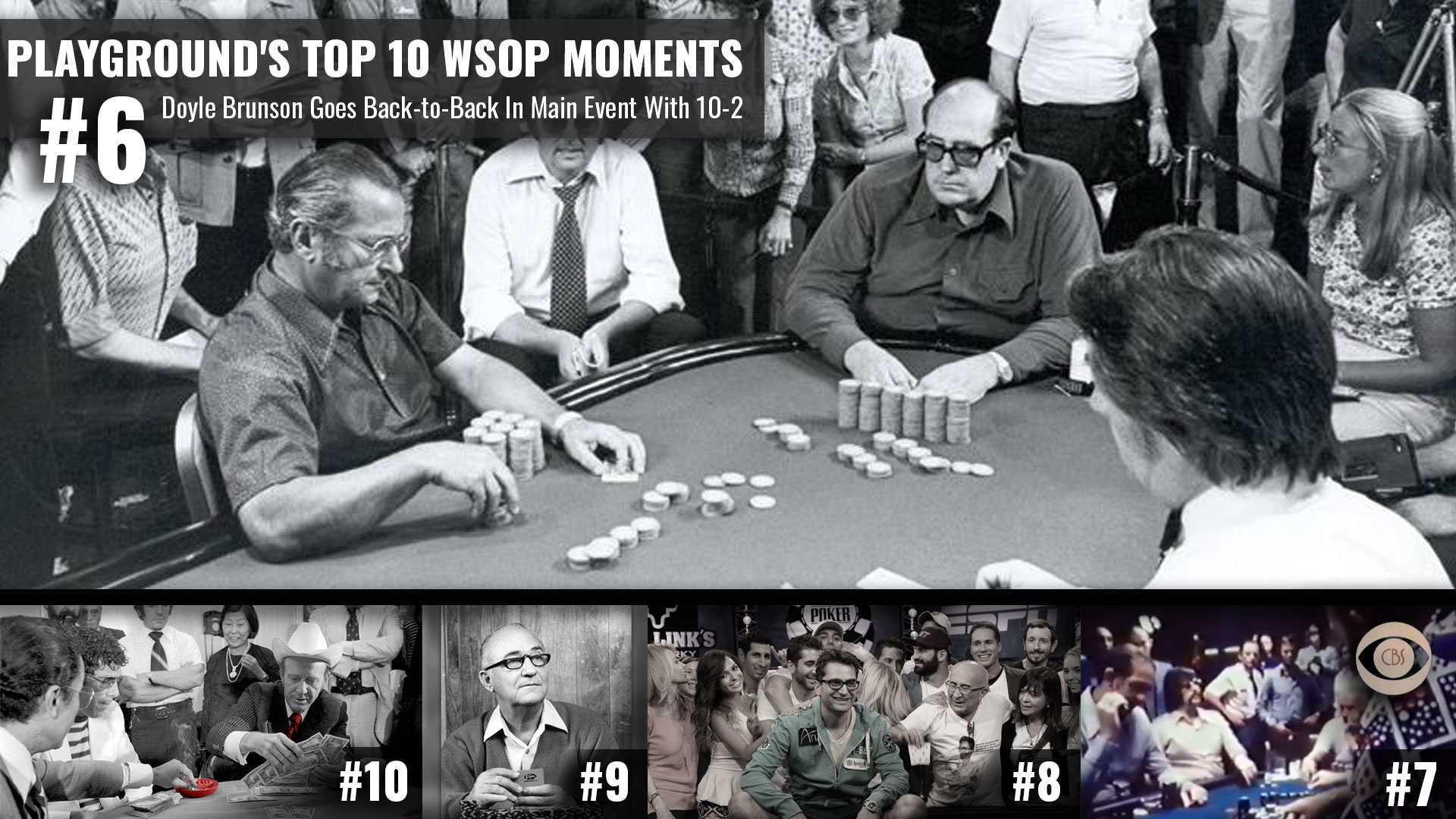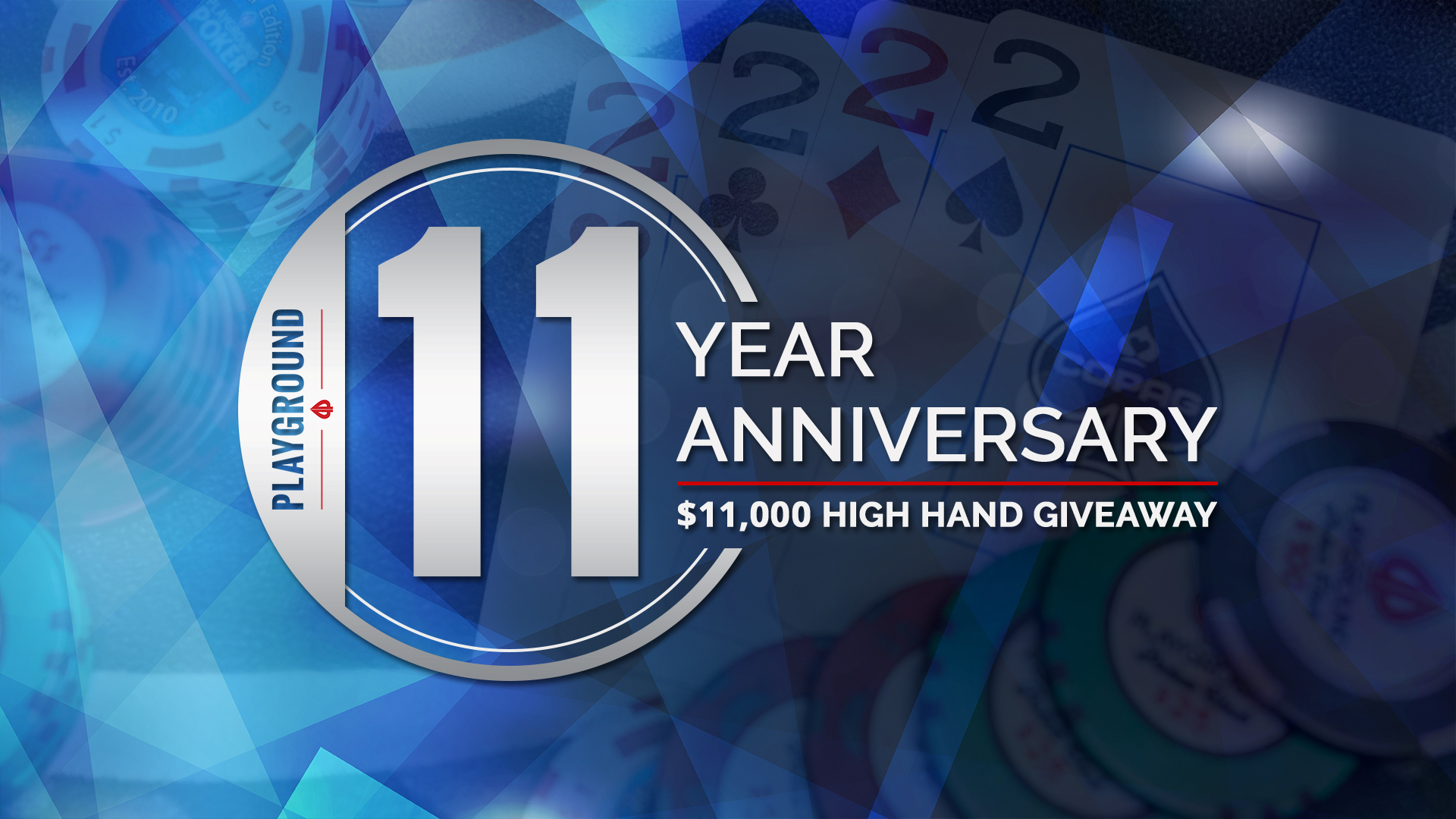The World Series of Poker Main Event is game’s most prestigious tournament. Starting from humble roots in the early 1970s, the WSOP Main Event brought the game to a global audience and has long been considered to be poker’s world championship.
The rich history of this event has created some of the most prominent legends of the game. We will be recapping the ten most memorable and influential moments in WSOP history over the next few weeks, starting with moments ten through six in this article.

10 – Amarillo Slim Wins 1972 Main Event, Becomes First “Ambassador” of the Game
The year 1972 marked a major step forward in the evolution of the World Series of Poker with the birth of the marketable poker professional. Thomas Austin Preston Jr., better known as “Amarillo Slim,” won the main event and used his newfound notoriety to pitch poker to the general public. According to Preston, he became “a touring ambassador for the sport” with the hope of changing the general public’s perception of poker.
Preston helped take the game from smoke-filled back rooms and dingy basements to the limelight of network television, thanks to his charismatic personality. Following his Main Event victory, Preston made appearances on such influential programs as The Tonight Show, 60 Minutes and Good Morning America. After adding publishing and film credits to his name, he solidified his cultural standing and inspired Kenny Rogers’ 1978 classic “The Gambler.”
The WSOP had made its first impression on mainstream America thanks to Preston. A CBS camera crew was present to film a documentary featuring the event the following year and it has only grown in popularity since then.
9 – Johnny Moss elected first “World Champion of Poker” in 1970 & wins first competitive WSOP in 1971
The World Series of Poker was first established in 1970 by the casino icon Benny Binion. The competition’s format was a far cry from what it is today. The inaugural World Series of Poker was attended by a handful of elite players who were personally invited by Binion, organizer of the event. They played for three days before a vote was taken by the players to determine who the best player was. Johnny Moss was seen as the top player by his peers, and he was awarded a pure silver cup; the first and last of its kind. Bracelets were issued the following year when Moss won it again.
The 1971 edition had a new format that featured four preliminary events and the $5,000 No Limit Hold’em Main Event. Moss bested his competitors in the single-table freezeout tournament to take home his second consecutive Main Event title.
Moss attended every WSOP from 1970 until his death in 1995. He won nine bracelets in the last 26 years of his life. Moss won a third Main Event title in 1974, a feat only matched by Stu Ungar. He was 81 years old when he won his ninth bracelet in 1988.
8- Antonio Esfandiari wins Largest Prize in Poker History
There was a time when the $10,000 buy-in to the WSOP Main Event seemed like an unfathomably large amount for a poker tournament. For the most part, it was only accessible to the best poker players and well-to-do businessmen. If one were to ask players from the early days of the WSOP Main Event in the 1970s, they would have told you that a seven-figure buy-in was unthinkable.
But in 2012, 48 players posted $1,000,000 to play the Big One for One Drop event. Organized by billionaire poker enthusiast and philanthropist Guy Laliberté, it raised more than $5.3 million for charity and also built the largest first prize in the history of tournament poker: $18,346,673. Antonio “The Magician” Esfandiari emerged victorious from the field to become the all-time money leader in the history of tournament poker at the time.
7- 1973 WSOP televised for the first time on CBS
Thanks largely to “Amarillo Slim” Preston’s national publicity tour, the 1973 edition of the World Series of Poker received an unprecedented amount of attention.
Television cameras descended on Binion’s Horseshoe Casino to provide the first live coverage of the event, paving the way for the huge productions that poker fans have come to expect.
Thirteen players paid the $10,000 entry fee that year and it marked the first time the Main Event played on two tables. Benny Binion had this to say on the future of the tournament, “We had seven players last year, and this year we had 13. I look to have better than 20 next year. It’s even liable to get up to be 50, might get up to be more than that… It will eventually.”
6- Doyle Brunson Wins Back-to-Back Main Events With 10-2
Lots of poker players have two favourite hole cards that make up their lucky hold’em hand, but only Doyle Brunson can claim that his lucky hand brought him back-to-back victories in the year’s biggest event.
In 1976, the “Texas Dolly” took down the Main Event with ![]()
![]() on a board of
on a board of ![]()
![]()
![]()
![]()
![]() to best Jesse Alto’s
to best Jesse Alto’s ![]()
![]() . Brunson repeated the feat the following year when his “ten-deuce” connected with the flop, turn and river on a board of
. Brunson repeated the feat the following year when his “ten-deuce” connected with the flop, turn and river on a board of ![]()
![]()
![]()
![]()
![]() to beat Gary Berland, who flopped two-pair with
to beat Gary Berland, who flopped two-pair with ![]()
![]() .
.
This incredible sequence of events put Brunson on the path to becoming the living legend he is today and ensured that 10-2 would forever be associated with the Poker Hall of Famer.
As you can see, the WSOP has grown by leaps and bounds over the years. Stay tuned as we count down more of the WSOP’s historic moments in the lead up to the WSOP-C Playground, which kicks off on August 18.








